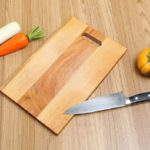Food waste is a common issue in modern life, and proper food storage is crucial to prevent waste and ensure food safety. Here are some tips to safely store your leftovers.
Tips for Storing Leftovers
To protect your family’s health, follow these safe and proper food storage practices.
Cool and Refrigerate Quickly

How to safely store leftovers to keep them tasty and safe? (Image: The Daily Meal)
One of the most important rules for storing leftovers is rapid cooling. Food should be cooled to a safe temperature (below 5°C) as quickly as possible to inhibit bacterial growth.
Divide leftovers into smaller portions to cool them faster. You can use small containers or ziplock bags for this purpose.
Ideally, leftovers should be cooled and refrigerated within 2 hours of cooking to maintain freshness and food safety.
Use High-Quality Containers

Choose high-quality food storage containers to keep leftovers safe and tasty. (Image: The Spruce Eats)
Using high-quality food storage containers is essential for safe leftover storage and maintaining flavor. Opt for containers with tight-fitting lids to prevent bacterial contamination and keep food from drying out or absorbing odors from the fridge.
Select containers made of BPA-free plastic, glass, or stainless steel to ensure they are safe for your health.
Refrigerate Leftovers
Storing leftovers in the refrigerator is the most common method to maintain freshness and safety.
Ensure your refrigerator maintains a temperature below 5°C. Regularly check the temperature with a food thermometer to confirm it remains stable.
Place leftovers on the middle or bottom shelves, where the temperature is coldest and most consistent. Avoid storing leftovers on the refrigerator door, as the temperature there tends to be unstable and can cause food to spoil.

Storing leftovers in the refrigerator is a popular way to keep food fresh and safe. (Image: Harvard Health)
Freeze Leftovers
Freezing is an effective long-term method for storing leftovers.
Ensure your leftovers are completely cooled before placing them in the freezer. This prevents “freezer burn” and maintains flavor. Use ziplock bags or specialized freezer containers to protect food from air and moisture.
Divide leftovers into smaller portions and label them with the dish’s name and freezing date for easier management and consumption before they expire.
Defrost Safely
It’s crucial to defrost leftovers properly to ensure safety and taste.
The best way to defrost leftovers is in the refrigerator overnight. This allows the food to thaw gradually while maintaining a safe temperature. If you need to defrost quickly, use the microwave, but be sure to use the defrost setting to avoid uneven cooking.
Avoid defrosting at room temperature, as bacteria can multiply rapidly.
Reheat Leftovers Properly

You can use the microwave’s reheat setting to warm up your leftovers. (Image: Real Simple)
Properly reheating leftovers not only kills bacteria but also retains flavor. Food should reach a temperature of at least 75°C to destroy harmful bacteria. You can use a food thermometer to check this.
Ensure even heating by stirring or turning the food during the reheating process.
You can use a microwave or stove. For the microwave, use the reheat setting and cover the food to retain moisture.
Food Storage Time Guidelines
Different foods have varying storage times in the refrigerator and freezer. Here are some safety guidelines:
– Cooked food can be stored in the refrigerator for 3 to 4 days. If frozen, it can be stored for 2 to 6 months, depending on the type of food.
– Cooked seafood and meat should be consumed within 1 to 2 days when refrigerated and 2 to 3 months when frozen.
According to VTC news
Ten Strategies to Streamline Your Cooking Process
Are you a busy housewife looking for ways to save time in the kitchen? Did you know that flossing can also help you out? Check out these 10 tips to help you quickly and easily prepare delicious meals for your family. Learn how to peel garlic in 10 seconds and cut cherry tomatoes quickly for a healthy and tasty meal.
4 Strategies for Storing Chili for One Month
Do you want to enjoy the fresh, spicy flavor of chili peppers all month long? Look no further! This article provides tips and tricks for storing chili peppers so that they stay fresh and flavorful for up to a month. Learn how to best preserve your peppers and savor their zesty taste for weeks to come.
8 Common Mistakes People Make with Cutting Boards
Are you using your cutting board correctly? Many Vietnamese households rely on cutting boards in their kitchen, but not everyone knows how to use them properly, especially when it comes to wooden cutting boards. Check out these 8 mistakes to avoid when using a cutting board to ensure both hygiene and safety for everyone in your family.



































